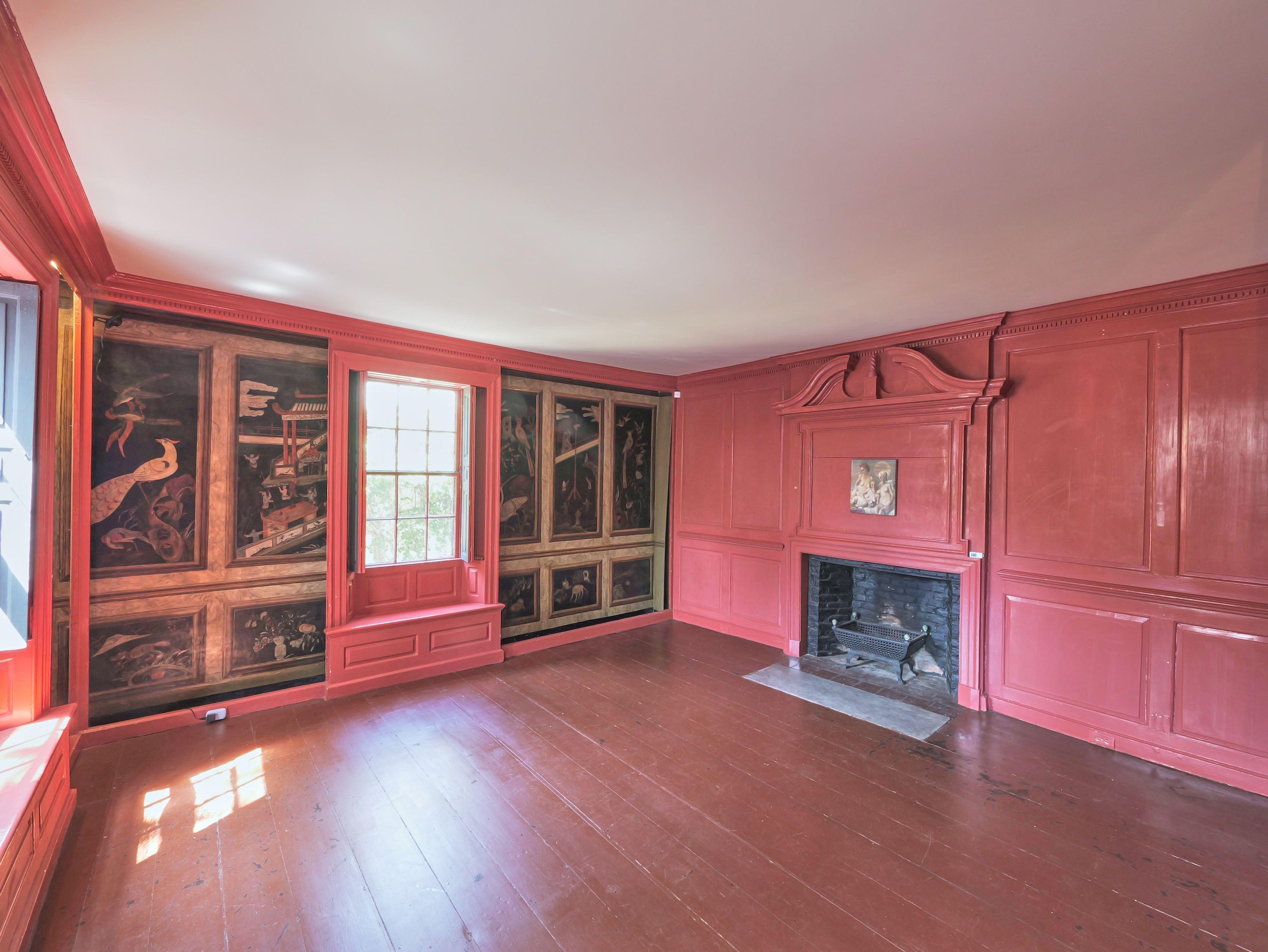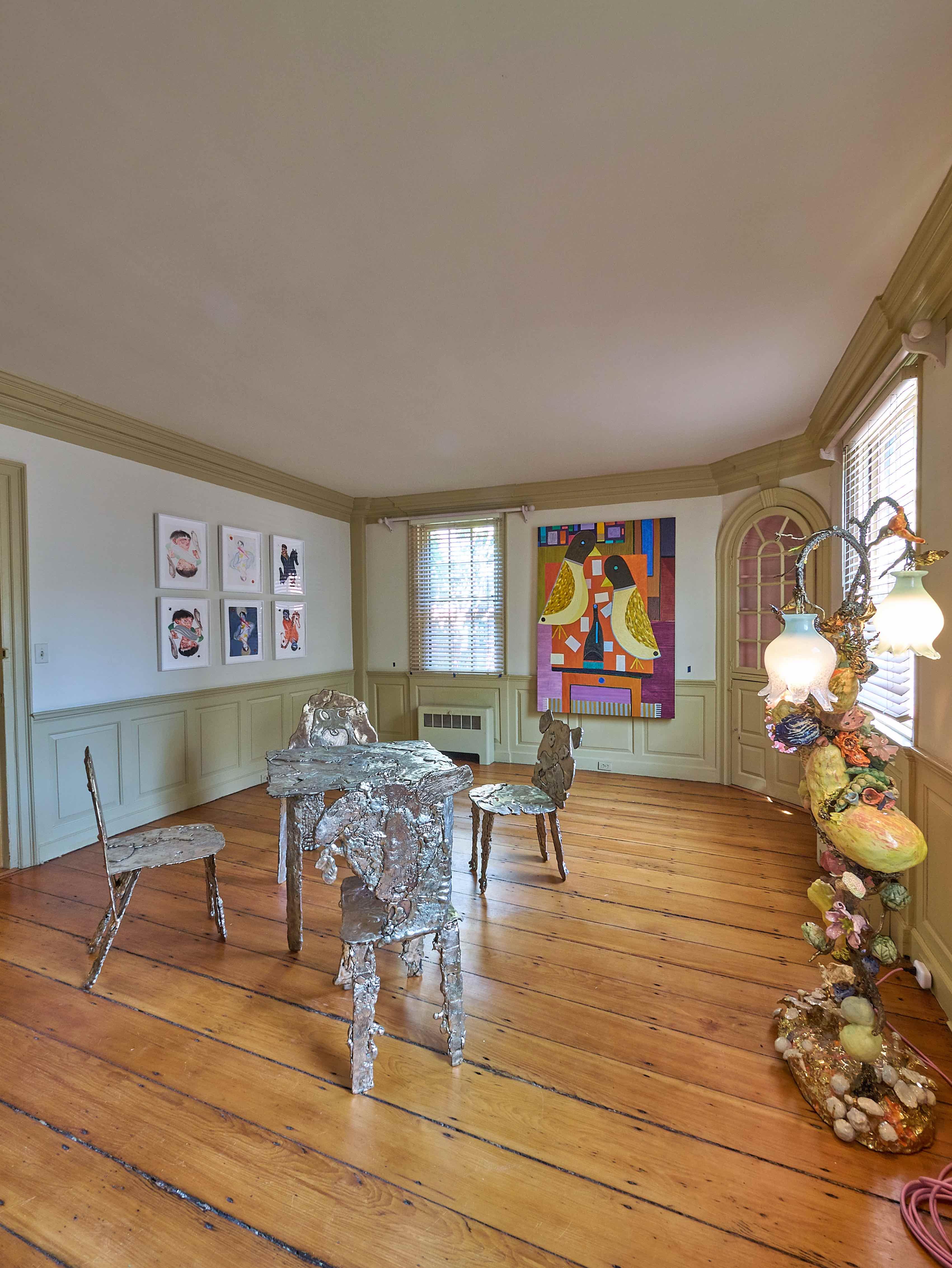This summer, Art & Newport has organized “Games, Gamblers & Cartomancers: The New Cardsharps,” curated by Kazanjian and curator Alison M. Gingeras. The exhibition brings together seventeen buzzy contemporary artists—including Cecily Brown, Rashid Johnson, Sanya Kantarovsky, and John Currin—to revisit the trope of cardplay. It is set in Newport’s Vernon House, a colonial-era home that once served as the headquarters of Comte de Rochambeau, commander of the French forces stationed in Newport during the American Revolution. This exhibition marks the first time the home is open to the public.
The idea came to Kazanjian when she tried to meet an old friend who was busy at her bridge club. “I began to hear about other groups that did it regularly, and then thought: the card players, it’s a Newport story,” said Kazanjian. “And it’s a genre that people haven’t looked at closely.”
“Card play is really part of the social fabric of Newport, said Gingeras, who has served as curator at the Solomon R. Guggenheim Museum, in a conversation with Art & Object. “From today going back to the Gilded Age of the 19th century.”






























![DEl Kathryn Barton [Australian b. 1972] the more than human love , 2025 Acrylic on French linen 78 3/4 x 137 3/4 inches 200 x 350 cm Framed dimensions: 79 7/8 x 139 inches 203 x 353 cm](/sites/default/files/styles/image_5_column/public/ab15211bartonthe-more-human-lovelg.jpg?itok=wW_Qrve3)



